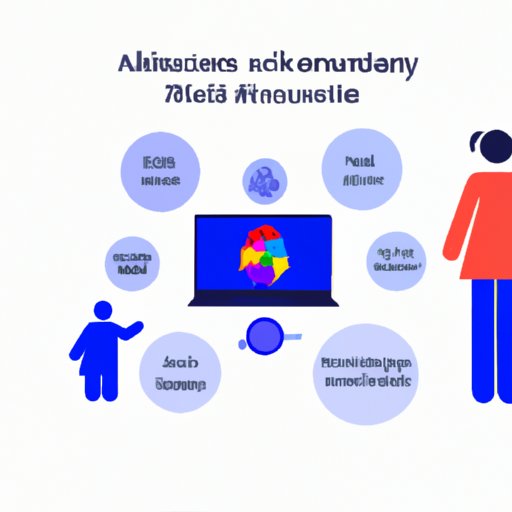Introduction
Autism Spectrum Disorder (ASD) is a neurological and developmental disorder that affects a person’s ability to communicate and interact with others. It is characterized by difficulties in social interaction, communication, and repetitive behaviors. This article will provide an overview of how to tell if you are on the autism spectrum, including looking for common signs and symptoms, consulting a qualified professional, taking self-assessment tests, understanding family history, observing social interaction, and reviewing medical records.
Identifying Symptoms
The first step in determining whether you are on the autism spectrum is to look for common signs and symptoms. These can include difficulty making eye contact, limited use of facial expressions, difficulty understanding other people’s emotions, difficulty initiating and sustaining conversations, repetitive movements or behaviors, and difficulty adjusting to changes in routine. It is important to remember that everyone experiences these symptoms differently and to the varying degrees, so it is important to pay attention to your own unique experience.
It is also important to look for possible developmental delays. These can include delayed speech development, language delays, difficulty with motor skills, and difficulty with social skills. If you notice any of these delays, it is important to seek out a professional evaluation.
Professional Evaluation
Consulting a qualified professional is the best way to determine whether you are on the autism spectrum. A professional will be able to assess whether you meet the criteria for ASD and provide recommendations for treatment. They may also be able to refer you to additional resources and support networks.
When seeking a professional evaluation, it is important to make sure that they have experience working with individuals on the autism spectrum. It is also important to ask questions about their qualifications and the methods they use to assess ASD. Be sure to discuss any concerns you have about the process and ask for clarification if necessary.
Online Tests
In addition to professional evaluation, there are online self-assessment tests that can help you determine if you are on the autism spectrum. These tests are not meant to replace professional evaluation, but they can provide insight into your symptoms and behavior. It is important to understand the results of the test and to consult with a professional if you have any questions or concerns.
Understanding Family History
Another way to determine if you are on the autism spectrum is to investigate whether there is a family history of ASD. This could include asking relatives about any related medical records, such as diagnosis and treatment. It is also important to consider any other medical conditions that could be related to ASD, such as intellectual disabilities or ADHD.
Observing Social Interaction
It can also be helpful to pay close attention to how you interact with others. Do you struggle to express yourself or understand others? Do you find it difficult to maintain conversations or form relationships? These can all be indicators of an underlying issue that needs to be addressed.
Reviewing Medical Records
Finally, it is important to review any past medical records for evidence of developmental delays or other signs of ASD. This can include looking for reports of speech delays, language delays, or difficulty with social skills. It is also important to consider any other medical conditions that could be related to ASD.
Conclusion
In conclusion, determining whether you are on the autism spectrum can be a complex process. It is important to look for common signs and symptoms, consult a qualified professional, take self-assessment tests, understand family history, observe social interaction, and review medical records. With the right resources and supports, it is possible to identify and address any issues related to ASD.
For more information on autism spectrum disorder, please visit the National Institute of Mental Health website at https://www.nimh.nih.gov/health/topics/autism-spectrum-disorders-asd/index.shtml.
(Note: Is this article not meeting your expectations? Do you have knowledge or insights to share? Unlock new opportunities and expand your reach by joining our authors team. Click Registration to join us and share your expertise with our readers.)
